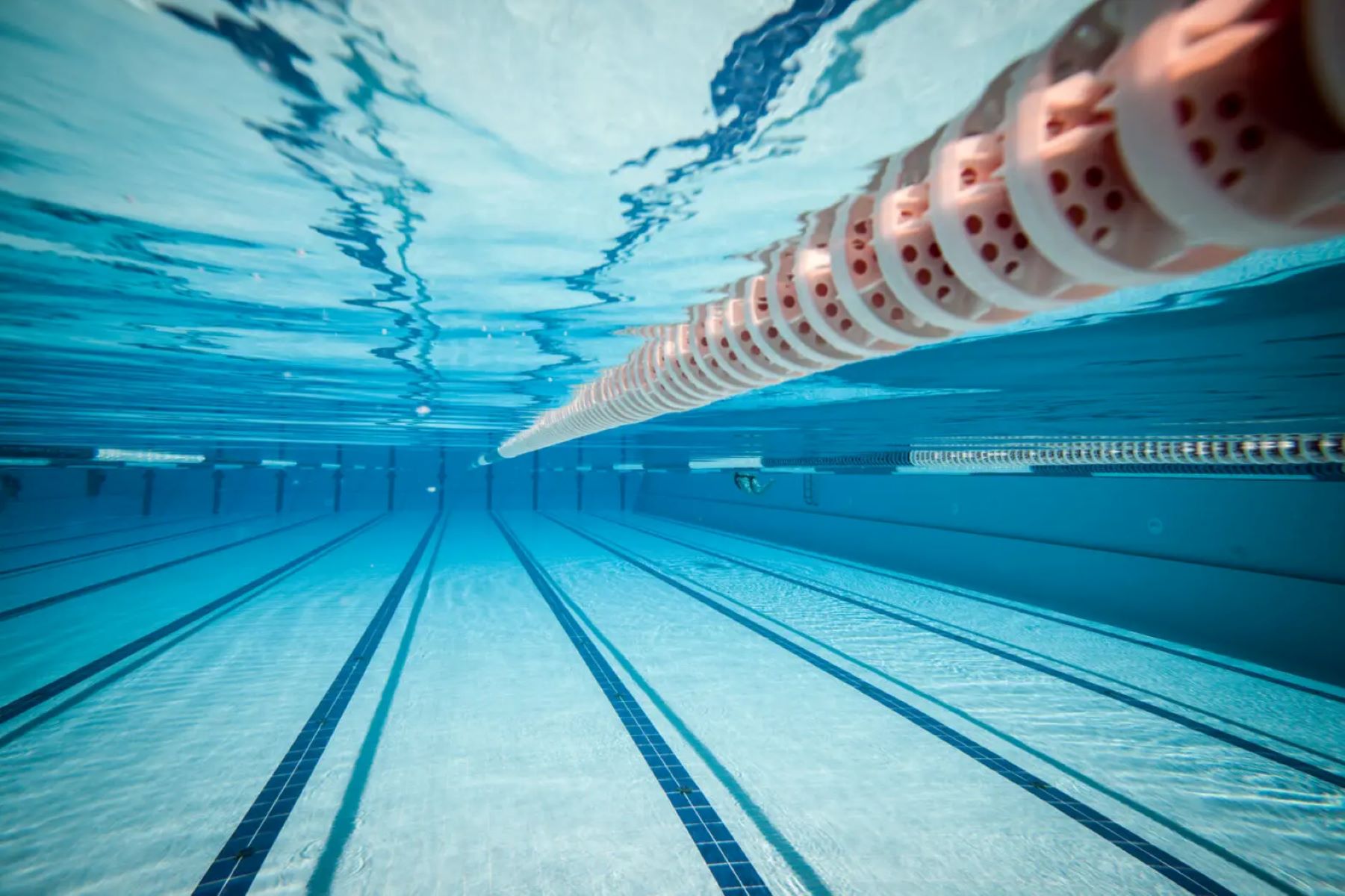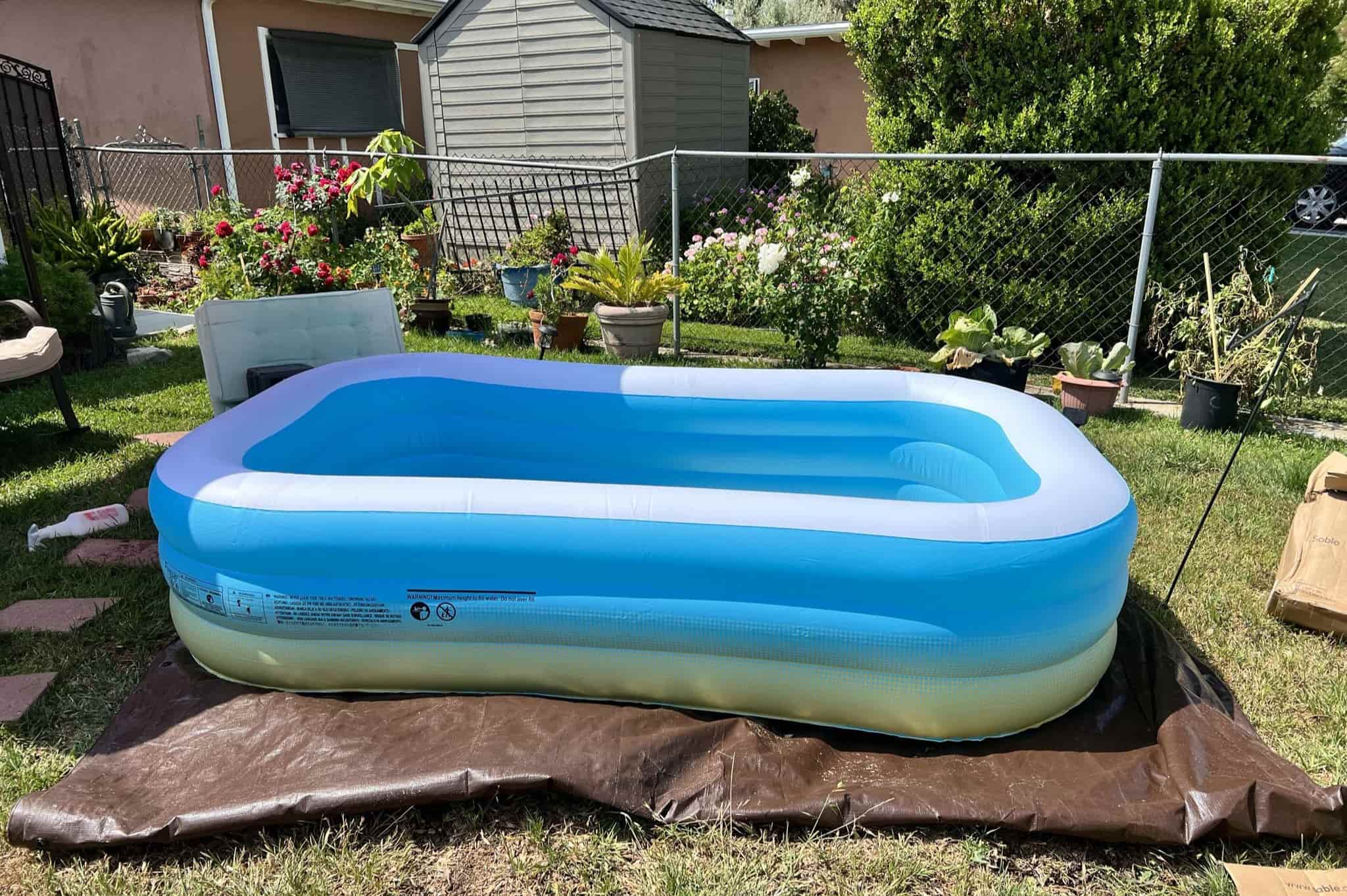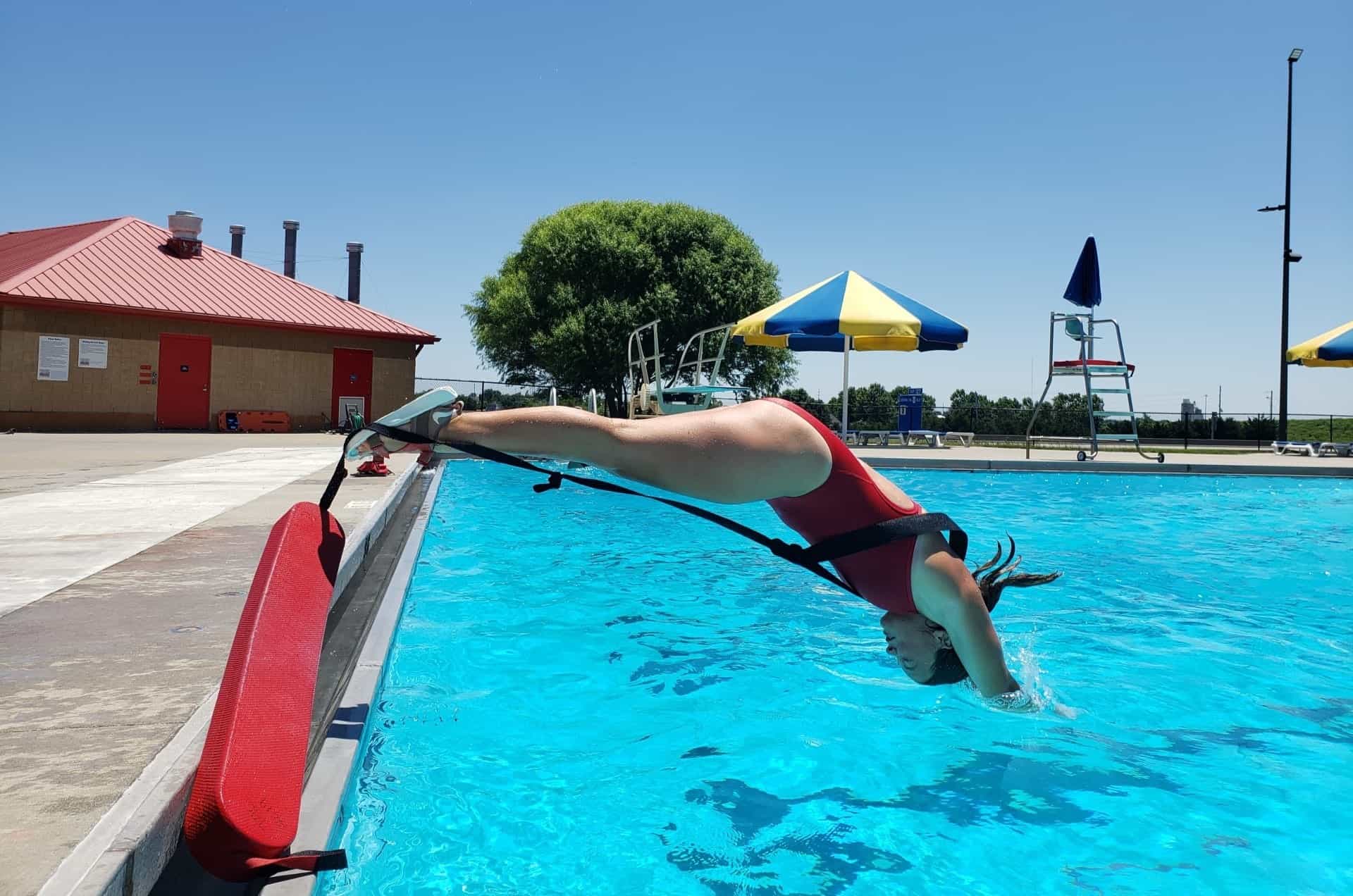Home>Gardening & Outdoor>Outdoor Recreation & Activities>How Wide Is A Swimming Pool Lane


Outdoor Recreation & Activities
How Wide Is A Swimming Pool Lane
Published: February 18, 2024
Discover the ideal width of a swimming pool lane for outdoor recreation and activities. Learn the standard dimensions for a perfect swimming experience.
(Many of the links in this article redirect to a specific reviewed product. Your purchase of these products through affiliate links helps to generate commission for Storables.com, at no extra cost. Learn more)
Introduction
Swimming is a sport that requires precision, technique, and endurance. Whether it's for leisurely laps or competitive races, the width of a swimming pool lane plays a crucial role in ensuring a fair and safe swimming environment. The dimensions of a pool lane can impact swimmers' performance and overall experience, making it a fundamental aspect of pool design and competition standards.
The width of a swimming pool lane is a topic of interest for swimmers, coaches, and pool designers alike. It directly influences the flow of swimmers during races and training sessions, as well as the safety and comfort of individual swimmers. Understanding the standard dimensions, variations, and implications of lane width is essential for anyone involved in the world of swimming, from beginners to seasoned professionals.
In this article, we will delve into the intricacies of swimming pool lane width, exploring the standard measurements, variations, and the significance of lane width in competitive swimming. Additionally, we will examine the considerations that pool designers and architects take into account when determining lane width, shedding light on the meticulous planning involved in creating optimal swimming environments.
As we navigate through the dimensions and implications of swimming pool lane width, we will gain a comprehensive understanding of its impact on swimmers and the sport as a whole. Whether you're a swimming enthusiast, a competitive athlete, or someone with a passion for pool design, this exploration of swimming pool lane width will provide valuable insights into an often overlooked yet vital aspect of the swimming experience.
Key Takeaways:
- Standard swimming pool lane width is 2.5 meters, ensuring fair and safe conditions for swimmers. It’s crucial for competitive races and provides a consistent experience for all athletes.
- Lane width variations cater to diverse user needs, balancing safety and space constraints. Designers consider user demographics, safety, and adaptability to create inclusive swimming environments.
Read more: How Many Lanes In An Olympic Swimming Pool
Standard Width of a Swimming Pool Lane
The standard width of a swimming pool lane is a critical factor in ensuring fair and safe swimming conditions for athletes. In competitive swimming, adherence to specific lane dimensions is essential for maintaining uniformity across different pools and competitions. The standard width of a swimming pool lane is typically 2.5 meters or 8 feet and 2.5 inches. This width allows for ample space for swimmers to navigate their lanes without feeling cramped or encroaching on neighboring lanes during races or training sessions.
The uniformity of lane width across swimming pools is crucial for ensuring consistent and equitable conditions for swimmers, regardless of the competition venue. Whether it's an Olympic-sized pool or a community swimming facility, adhering to the standard lane width promotes fairness and accuracy in race outcomes. Additionally, standardization facilitates swimmers' ability to adapt to different pool environments, as they can train and compete with confidence, knowing that the lane dimensions remain consistent.
Furthermore, the standard width of a swimming pool lane aligns with the guidelines set forth by governing bodies such as FINA (Fédération Internationale de Natation), which oversees international swimming competitions. By adhering to these standards, pool designers and event organizers contribute to the integrity and legitimacy of swimming competitions worldwide.
In addition to competitive swimming, the standard lane width also influences recreational swimmers and fitness enthusiasts. Whether individuals are swimming for leisure, fitness, or rehabilitation, the consistent lane width provides a familiar and comfortable environment for their aquatic activities. This standardization contributes to a sense of predictability and safety, allowing swimmers to focus on their technique and enjoyment without being hindered by irregular lane dimensions.
Overall, the standard width of a swimming pool lane serves as a cornerstone of fairness, safety, and consistency in the world of swimming. It ensures that swimmers, from beginners to elite athletes, can engage in their aquatic pursuits with confidence, knowing that the dimensions of the pool lanes adhere to established standards. This standardization not only upholds the integrity of competitive swimming but also enhances the overall swimming experience for individuals of all skill levels.
Variations in Lane Width
While the standard width of a swimming pool lane is set at 2.5 meters or 8 feet and 2.5 inches, variations in lane width can be observed in certain pool designs and settings. These variations, although deviating from the standard dimensions, are often purposefully implemented to cater to specific needs or constraints. Understanding the variations in lane width provides valuable insight into the diverse considerations that influence pool design and the swimming experience.
In some cases, pool designers may opt for wider lanes, exceeding the standard dimensions, to accommodate swimmers with varying abilities and comfort levels. Wider lanes offer additional space for swimmers to navigate, particularly in facilities that cater to a diverse range of users, including beginners, recreational swimmers, and individuals undergoing aquatic therapy. The increased width provides a sense of openness and freedom, reducing the likelihood of swimmers feeling confined or restricted during their aquatic activities.
Conversely, certain pool configurations may feature narrower lanes, deviating from the standard width to optimize space utilization or accommodate specific architectural constraints. While narrower lanes present challenges in terms of maneuverability, they are sometimes a practical necessity in facilities where space is limited. Pool designers must carefully balance the trade-offs associated with narrower lanes, ensuring that swimmers can still navigate their lanes comfortably and safely, even within constrained dimensions.
Moreover, variations in lane width can be observed in non-competitive swimming environments, such as leisure and recreational pools. These settings often prioritize user experience and comfort, leading to customized lane widths that cater to the specific needs and preferences of the intended user demographic. For instance, family-oriented pools may feature wider lanes to accommodate parents swimming alongside their children, fostering a more inclusive and enjoyable aquatic experience for families.
In summary, while the standard width of a swimming pool lane provides a foundational benchmark for consistency and fairness in competitive swimming, variations in lane width offer a glimpse into the adaptability and customization inherent in pool design. Whether wider or narrower than the standard dimensions, these variations reflect the nuanced considerations that pool designers and architects navigate to create optimal swimming environments for diverse user groups and spatial constraints. By acknowledging and understanding these variations, we gain a deeper appreciation for the intricacies of pool design and the diverse needs of swimmers across different aquatic settings.
Importance of Lane Width in Swimming Competitions
The importance of lane width in swimming competitions cannot be overstated, as it directly impacts the fairness, safety, and performance of athletes. In the competitive swimming arena, where fractions of a second can determine victory, the dimensions of a pool lane play a pivotal role in ensuring equitable conditions for all swimmers.
First and foremost, the standardization of lane width across swimming competitions is essential for maintaining uniformity and fairness. When swimmers dive into the water, they rely on consistent lane dimensions to gauge their positioning and execute their race strategies effectively. Deviations from the standard width could introduce disparities, potentially favoring swimmers in wider lanes and disadvantaging those in narrower ones. By adhering to specific lane dimensions, competition organizers uphold the integrity of races and eliminate potential biases arising from irregular lane widths.
Moreover, the importance of lane width extends to the safety and comfort of swimmers during competitions. Adequate space within a lane allows swimmers to maneuver without feeling cramped or encroaching on neighboring lanes, reducing the risk of collisions and ensuring a smooth and uninterrupted race flow. This aspect is particularly crucial in high-stakes events where athletes push their physical limits, as any disruptions due to inadequate lane width could compromise the integrity of the competition and the safety of participants.
Furthermore, the standard width of a swimming pool lane contributes to the accuracy and reliability of race outcomes. By providing consistent lane dimensions, competition organizers minimize the potential for external factors, such as irregular lane widths, to influence race results. Swimmers can focus on their performance without concerns about unfair advantages or disadvantages stemming from variations in lane width, fostering an environment where athletic prowess and technique take precedence.
In summary, the importance of lane width in swimming competitions transcends mere measurements; it embodies the principles of fairness, safety, and accuracy. By upholding standardized lane dimensions, competition organizers and governing bodies uphold the integrity of swimming events, ensuring that athletes can compete on a level playing field. The standard width of a swimming pool lane serves as a cornerstone of equitable competition, where swimmers can showcase their skills with confidence, knowing that their race outcomes are determined by their abilities rather than external variables.
Considerations for Lane Width in Pool Design
When it comes to designing a swimming pool, the considerations for lane width are multifaceted and pivotal in creating an optimal aquatic environment. Pool designers and architects must navigate a myriad of factors to determine the most suitable lane width, balancing the needs of swimmers, spatial constraints, and functional requirements. The following considerations shed light on the intricate decision-making process involved in determining lane width in pool design.
Read more: How To Cover A Swimming Pool
1. User Demographics:
Understanding the intended user demographic is paramount in determining lane width. For facilities catering to competitive swimmers, adherence to standard lane dimensions is crucial to align with competition requirements and ensure a consistent experience for athletes. Conversely, pools designed for recreational use or aquatic therapy may benefit from wider lanes to accommodate diverse user abilities and preferences, promoting inclusivity and comfort.
2. Safety and Maneuverability:
Safety considerations play a pivotal role in lane width determination. Ample space within a lane is essential to facilitate swimmers' maneuverability, reducing the risk of collisions and enhancing overall safety during races and training sessions. Pool designers must strike a balance, ensuring that the chosen lane width allows for unrestricted movement while minimizing the potential for accidents or disruptions.
3. Spatial Constraints:
The physical dimensions of the pool facility, including its length and overall footprint, influence the feasibility of lane width options. In instances where space is limited, designers may need to carefully assess the trade-offs associated with narrower lanes, ensuring that swimmers can still navigate comfortably without compromising safety or fairness. Conversely, facilities with ample space may have the flexibility to explore wider lane options, catering to user comfort and diverse aquatic activities.
4. Flexibility and Adaptability:
Pool designers often strive to create versatile environments that can accommodate a range of aquatic activities and user preferences. The chosen lane width should allow for flexibility, enabling the pool to cater to various swimming styles, training regimens, and recreational pursuits. This adaptability ensures that the pool remains a dynamic and inclusive space, capable of meeting the evolving needs of its users.
Read more: How To Tile A Swimming Pool
5. Regulatory Guidelines:
Adherence to regulatory standards and guidelines, such as those set forth by governing bodies like FINA, is a fundamental consideration in pool design. Compliance with established lane width requirements ensures that the facility aligns with industry best practices, competition standards, and safety protocols. Pool designers must remain cognizant of these guidelines to create swimming environments that meet recognized benchmarks for fairness and performance.
In essence, the considerations for lane width in pool design encompass a delicate interplay of user needs, safety imperatives, spatial dynamics, and regulatory compliance. By carefully weighing these factors, pool designers can craft aquatic spaces that not only meet functional requirements but also foster a safe, inclusive, and enjoyable swimming experience for individuals of all skill levels and aspirations.
Conclusion
In conclusion, the width of a swimming pool lane is far more than a mere measurement; it embodies the principles of fairness, safety, and inclusivity in the world of swimming. From the standard dimensions that underpin competitive races to the nuanced variations that cater to diverse user needs, lane width plays a pivotal role in shaping the swimming experience for athletes and enthusiasts alike.
The standard width of 2.5 meters or 8 feet and 2.5 inches serves as a universal benchmark, ensuring consistency and fairness across swimming competitions. This standardization not only upholds the integrity of races but also provides swimmers with a familiar and equitable environment in which to showcase their skills. Whether it's the Olympic stage or a local swimming meet, adherence to specific lane dimensions fosters an atmosphere where athletic prowess takes center stage, free from the influence of irregular lane widths.
Furthermore, the considerations for lane width in pool design underscore the intricate balance between user needs, safety imperatives, and spatial dynamics. Pool designers navigate a complex landscape, striving to create aquatic environments that cater to competitive athletes, recreational swimmers, and individuals seeking aquatic therapy. By carefully weighing factors such as user demographics, safety considerations, and regulatory guidelines, designers can craft pools that offer a harmonious blend of functionality, inclusivity, and adaptability.
As we reflect on the dimensions and implications of swimming pool lane width, it becomes evident that this seemingly straightforward aspect of pool design holds profound significance. It symbolizes the commitment to fairness, the prioritization of safety, and the celebration of swimming as a universally accessible and enriching activity. Whether swimmers are racing for gold, embarking on a leisurely swim, or engaging in aquatic therapy, the width of a swimming pool lane serves as a silent yet powerful enabler, shaping their experiences and fostering a sense of unity within the swimming community.
In essence, the width of a swimming pool lane transcends numerical measurements; it embodies the values of equity, safety, and inclusivity, enriching the swimming experience for individuals of all backgrounds and aspirations. By recognizing and embracing the impact of lane width, we affirm our commitment to creating swimming environments that empower, inspire, and unite swimmers across the globe.
Frequently Asked Questions about How Wide Is A Swimming Pool Lane
Was this page helpful?
At Storables.com, we guarantee accurate and reliable information. Our content, validated by Expert Board Contributors, is crafted following stringent Editorial Policies. We're committed to providing you with well-researched, expert-backed insights for all your informational needs.














0 thoughts on “How Wide Is A Swimming Pool Lane”